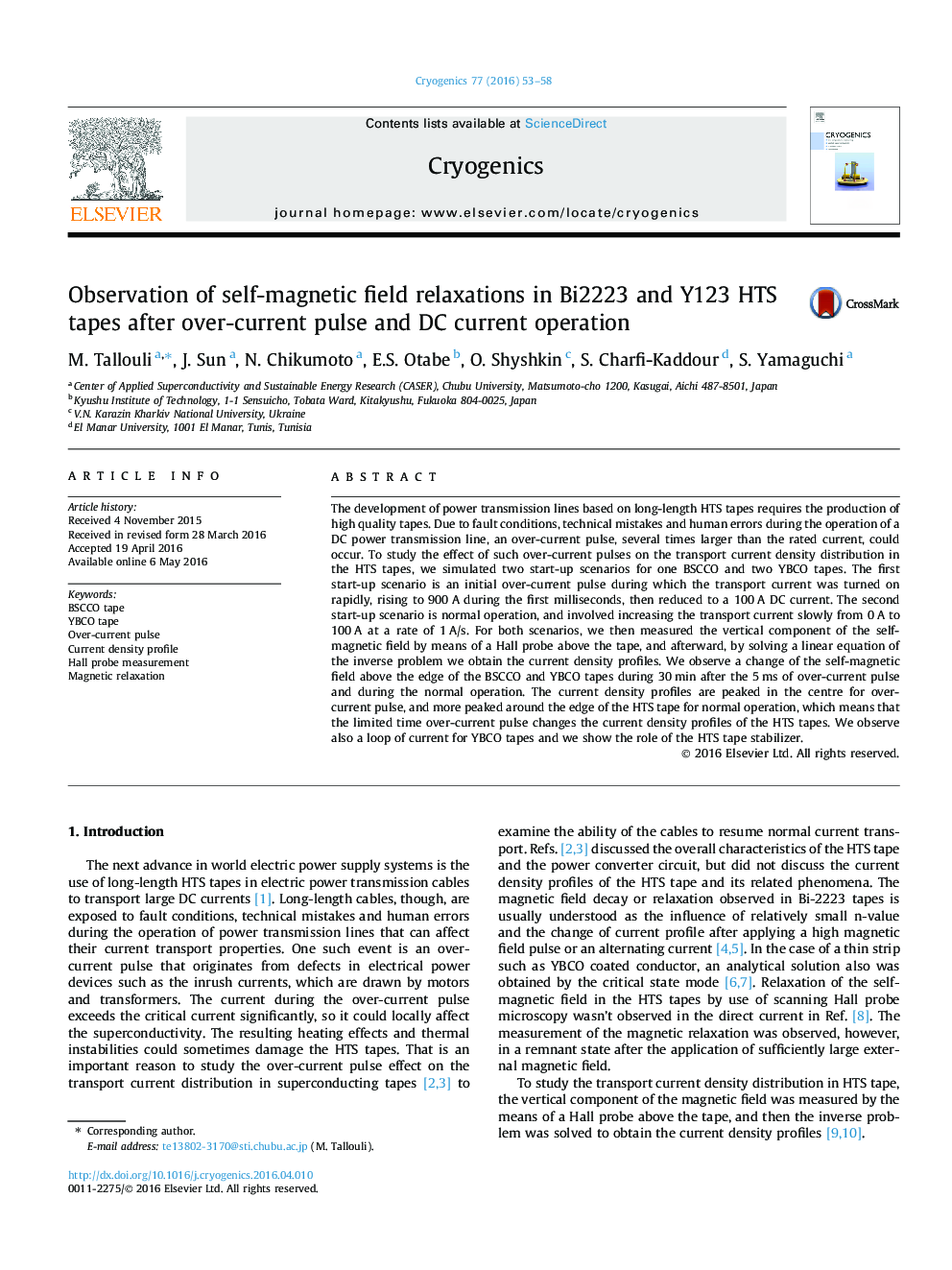| Article ID | Journal | Published Year | Pages | File Type |
|---|---|---|---|---|
| 1507233 | Cryogenics | 2016 | 6 Pages |
•An over current pulse for some milliseconds and DC current is applied to BSCCO and YBCO tapes.•Hall probe measures self-magnetic field near the tapes’ edge and scans the self-magnetic profiles.•Linear equations of the inverse problem are calculated and current density profiles are shown.•Over-current pulse and normal operations are compared.•Change of the self-magnetic fields and current loop in HTS tapes are observed.
The development of power transmission lines based on long-length HTS tapes requires the production of high quality tapes. Due to fault conditions, technical mistakes and human errors during the operation of a DC power transmission line, an over-current pulse, several times larger than the rated current, could occur. To study the effect of such over-current pulses on the transport current density distribution in the HTS tapes, we simulated two start-up scenarios for one BSCCO and two YBCO tapes. The first start-up scenario is an initial over-current pulse during which the transport current was turned on rapidly, rising to 900 A during the first milliseconds, then reduced to a 100 A DC current. The second start-up scenario is normal operation, and involved increasing the transport current slowly from 0 A to 100 A at a rate of 1 A/s. For both scenarios, we then measured the vertical component of the self-magnetic field by means of a Hall probe above the tape, and afterward, by solving a linear equation of the inverse problem we obtain the current density profiles. We observe a change of the self-magnetic field above the edge of the BSCCO and YBCO tapes during 30 min after the 5 ms of over-current pulse and during the normal operation. The current density profiles are peaked in the centre for over-current pulse, and more peaked around the edge of the HTS tape for normal operation, which means that the limited time over-current pulse changes the current density profiles of the HTS tapes. We observe also a loop of current for YBCO tapes and we show the role of the HTS tape stabilizer.
